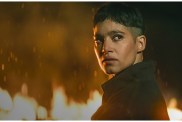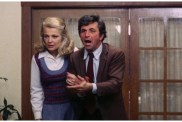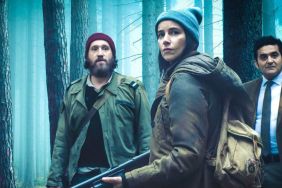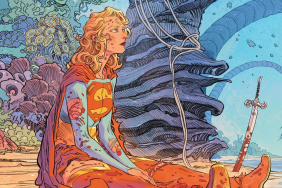
Why do we return to the ghost story? There isnt one answer. Its the universality of a past misdeed dredged up, haunting minds and bodies, for instance. Or the enduring effect of the uncanny invading a homethe personal, familial space. Theres also a coziness, an odd warmth in the design of an old, cold Gothic manor. More personally, I just love the wallpaper in many of these films. Its the meeting of these elements where the purely frightful and an affection for its aesthetic recalls the thrill of being told a scary story in the dark.
To a certain degree, James Watkins film adaptation of the Susan Hill novella, The Woman in Black hit said notes. It also carried the added sentimentality of being a neo-Hammer production, as if we were presented with a comfortably eerie film out of time. The same could be said about its sequel, The Woman in Black 2: Angel of Death, only that its even better. Directed with style, grace and deliberate dread by Tom Harper (Peaky Blinders, This is England 86), The Woman in Black 2 is a fine, scary story, very well told.
In the 40 years since Arthur Kipps (Daniel Radcliffe) roamed the halls of Eel Marsh House in The Woman in Black, two World Wars have broken out. Harper, often lensing London and the English countryside in classical, ominous manner, makes this parallel apparent. Just as more young men go off to die in battle, so do more young children meet The Woman in Black. And sometimes, just as the film opens with Londons devastation, she comes to you.
Escaping the violence raining on London, schoolteacher Eve (Phoebe Fox) and headmistress Jean (Helen McCrory) transport their class of kids to that very Eel Marsh House, where the vengeful specter lay in wait. With grand pullbacks early onone, in a train station, feels so era appropriateits clear Harper is letting the period setting motivate the craft. He establishes environments in big, lush shots and nails the tone of an endearing railroad flirtation between Eve and pilot Harry Burnstow (Jeremy Irvine).
Once at the isolated estate, Harper retains this patient framing, adding a distinct unease. Together with cinematographer George Steel, the director captures painterly, atmospheric images of the grounds, or shadowy, threatening scenarios inside. He lets the audience, Eve and the children search for the Woman in Black themselves, exploring the murkiness of the house, or the mist outside, and finding whatever haunts thembe it The Woman or their own historieswithin.
Though sometimes given to the all-too-contemporary (and ineffective) sting, Harper largely takes this deliberate approach and succeeds in crafting a sinister mood. Stark push-ins on the antiquated, dilapidated trinkets of Eel Marsh House are disquieting, while the film rarely forgets children are in the most danger. At one point, Edward (played the brilliantly named Oaklee Pendergast), the young boy at the center of The Woman in Blacks focus, is locked in a room by cruel classmates. Behind him somehow, once-rich, deteriorating drapery is the source of jitters, let alone the possibility of whats behind them.
And so The Woman in Black 2 plays out as effectively eerie, a traditional scary story in the dark. Its creeps work greatly on the strength of composition and rich design, if not its more classical tale of secrets and sacrifice and personal anguish. Thats okay. Its beautiful, even.










